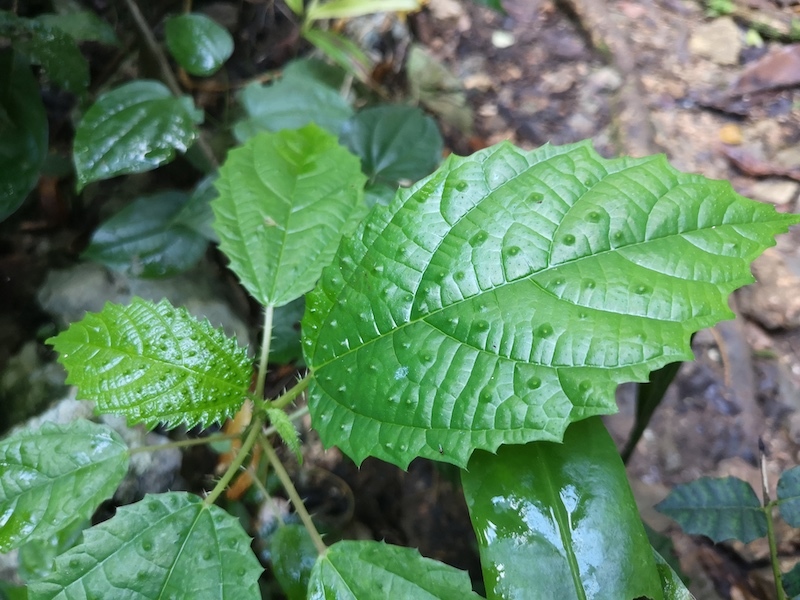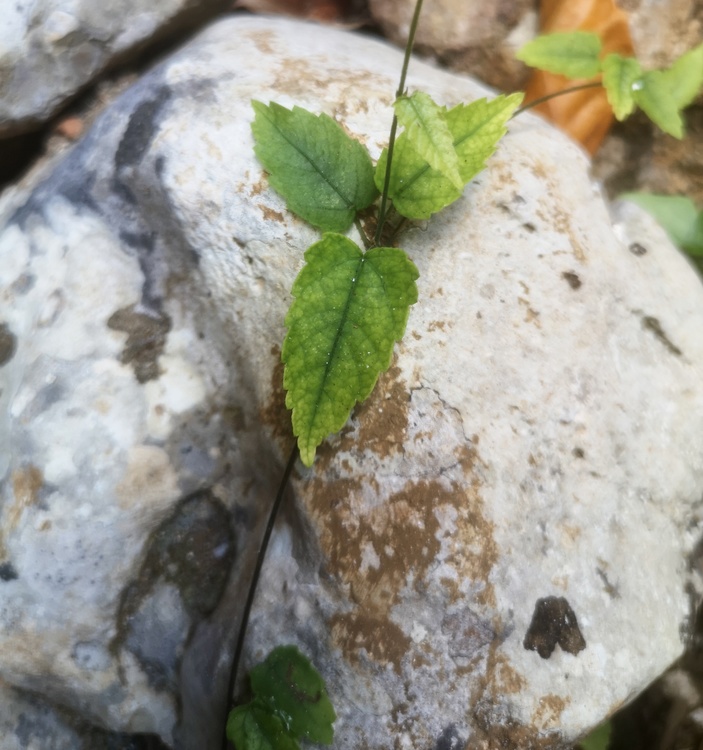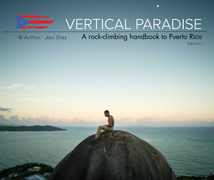| Elevation: | 2,834 ft |
| GPS: |
18.2223, -66.43029 Google Map · Climbing Area Map |
| Page Views: | 808,785 total · 6,518/month |
| Shared By: | Kristine Hoffman on Feb 12, 2014 · Updates |
| Admins: | Heliodor Jalba |
Description

If you love climbing limestone routes, then Puerto Rico is for you!
When you're ready for a change from all the limestone, Puerto Rico offers a wide variety of options, including multi-pitch basalt (Cerro Las Tetas), a granite monolith (Piedra Blanca), DWS/psicobloc over the ocean (Cueva del Indio) or over a river (Mata de Plátanos Bridge), granite bouldering (Juncos, Yabucoa), and beach bouldering with the sand serving as your crash pad (Vacía Talega, Aguadilla, and more). The climbing is fun with some of the areas having incredible panoramic views. If you want to get away from winter and just have a good time then a trip to Puerto Rico is an excellent idea!
GUIDEBOOKS & DONATIONS: Please consider purchasing the guidebooks from Aventuras Tierra Adentro. The money goes to route maintenance. They are available as downloadable PDF files from the website or as paper booklets if you visit the store in person: https://goo.gl/maps/5BNETox8AmEmZyFt5 The owner of Aventuras Tierra Adentro is a cornerstone of the PR climbing community, and has developed and maintains many of the routes on the island. If you would like to donate directly, you can send your donation by paypal to aventurastierradentro@gmail.com
The most frequently climbed areas (Nuevo Bayamón, Cerro Las Tetas, Flying Coconut, Caliche, and Roca Norte) have very good anchor and bolt conditions. In addition, there's an annual climbing event every March, the Monagas 12 Hours, where donations are used to replace bolts and anchors. A typical sport rack of 18 draws and a 60 or 70m rope should get you up anything on the island and helmets are recommended.
Puerto Rico is the smallest island in the Greater Antilles, located in the Caribbean Sea. The island is 100 miles long by 35 miles wide (driving equivalent: 4 hours long by 1 hour wide). The primary language is Spanish but English is widely spoken around most of the island. Being a territory of the United States, the currency is the US dollar. Prices for food, lodging, transportation, etc. tend to be similar to the States but cheaper options can be found.
Getting There

To get to Puerto Rico, you'll most likely be flying into San Juan (SJU). The other two main airports are in Aguadilla (BQN) and Ponce (PSE). Plane tickets can be found for as little as $300 in the winter but the average price is more typically in the $400-$500 range for round trip. Internationally, you can find direct flights from various Caribbean islands, Panamá City, Bogotá, Madrid, Frankfurt, and Montreal and Toronto (during the cold months).
Being a territory of the United States, the setup particular to Puerto Rico is that flights between the United States and Puerto Rico are domestic, not international, so there's no customs or immigration control between the two. However, when flying out of Puerto Rico to the States (only), there is an agricultural control to prevent the spread of disease.
The climbing areas are scattered all around the island and there is no real public transportation outside of San Juan so renting a car is pretty much mandatory. Uber and taxis in the metro / San Juan area are an option, and they are much cheaper than in the States.
Google Maps works fine around the island and cell phone reception is plentiful. The driving directions will rarely fail you, even on the tiniest roads up in the mountains. The driving time estimates are accurate. Alternatively, plenty of people prefer to use the Waze app.
There are several things you should know about driving in Puerto Rico. 1) The roads are in poor condition around most of the island and pot holes should be expected on any road, large or small. The highways are generally in better condition but still keep an eye out. 2) In residential areas speed bumps are a popular way of slowing people down but they are not always marked and can be hard to see. 3) The rule of "left lane is the passing lane" doesn't apply in Puerto Rico so expect slow vehicles in any lane and just go around because they're not going to move over for you. 4) Some of the highways are toll roads but an "Auto Expreso" pass is available at all the car rental places so that you will be able to just drive right through the toll stations. These passes cost a little more but the convenience and time savings is worth it in my opinion. 5) Police cars drive around with their flashing lights on. If they want to pull you over, they'll turn on the siren.
Give yourself time to account for road conditions, traffic, construction, getting lost, etc.
Guidebooks
Please consider purchasing the guidebooks for the main crags. The money goes to route maintenance. They are available as a downloadable PDF file from the website or as a paper booklet. You can purchase the print versions in person from the store (Aventuras Tierra Adentro): https://goo.gl/maps/5BNETox8AmEmZyFt5
For Area 51, the guidebook is available in print at El Bloque Bouldering Gym.
The Roca Norte crag in Vega Baja is actively maintained on Mountain Project and routes are easy to find. There is always personnel at the crag to help you if needed.
In 2023, a book has been published that highlights the beautiful rock climbing areas you can find in our island, with incredible pictures, recommendations, and tips. It also highlights some important people who have worked very hard to help grow the climbing community, increase rock access, develop new areas, and maintain existing ones through their different approaches, such as their businesses, volunteer work or special interests. The book is in English. To pick up a copy locally, contact Javi Díaz at 787-691-9104, or get it shipped to you by buying it online.
Climate
Puerto Rico has a year-round tropical climate which means it never really gets cold but it can get very hot during the summer months (June-August, mostly in the 90F degrees range). January through March is the best time to climb, with temperatures in the 70s and 80s during the day and 50-60s in the mountains at night.
May, September, October, and November are the rainiest months. Here are some interactive climate charts for Monagas (aka Nuevo Bayamón) for more detail. In particular, look at the high and low temperatures and the chance of rain.
The two crags in the south are a bit drier than the ones in the north of the island. Here's the chart (red is drier):
Source: https://www.weather.gov/sju/climo_pr_usvi_normals
You can find the monthly maps there to match your travel dates, for example: December, January, February, March
Weather patterns are quite predictable. Most days there is a prevalent breeze blowing from the east and rain travels in small patches. Download a radar app for your phone and you'll be able to tell when small rain patches come and go versus if the day is totally ruined. Most people pack and leave at the first rain drop but if you're in places such as Monagas (Nuevo Bayamón), you'll find plenty of routes, some overhanging, that stay dry in the case of light rain.
In mid May and at start of August, the sun is directly overhead at noon. For the twelve weeks in between, the sun is in the northern half of the sky. Depending on which way a crag or a particular sector is facing, shade can vary dramatically based on the time of year.
When the summer temperatures become too much, by far the most enjoyable crag to climb is Cerro las Tetas, due to its elevation in the mountains.
Hazards (Plants and Animals)
Climbing in Puerto Rico is a safe and pleasant experience.
There are a few plants and animals to keep in mind though, in order to avoid having a bad experience.
BEES
The primary concern while rock climbing in Puerto Rico is bee stings. Before you climb, look up and check for any swarming activity. Known long-term hives are noted in the route descriptions on Mountain Project, so check the description and comments for your route before you climb.
RASHES
The carrasco plant (comocladia glabra) probably deserves the next mention on this list. For some people, it can cause severe skin irritation and rashes combined with persistent intense itching, based on the same chemical (urushiol) as poison ivy. The skin reaction happens a few days after contact and lasts about two weeks. Luckily, the plant's leaves have a unique shape that's easy to notice, so keep an eye out for it as you hike and also check your belay areas.
ITCHING
A couple of other plants cause short-lived itching on contact and are much more frequent annoyances:
1) Ortiga (urera baccifera) - a visually distinctive leaf makes this plant easy to notice. Not only is there plenty of it on the ground but you'll also occasionally encounter a small specimen struggling to grow on ledges on the limestone.
2) Pringamosa (tragia volubilis) - a small vine that's also relatively easy to spot based on leaf shape. It can grow on ledges so you might come across it while up on the rock. You'll find it around the base of your climbs quite frequently. You can safely remove it by pulling the stem in between the leaves.
HARMLESS SNAKES
Small snakes can be encountered on trails and occasionally on the pocketed rock. They're harmless and will go on their way either right away or after a minute or two. Look past your toes when hiking so that you won't get startled by them and lose your footing. See Puerto Rican Racer and Puerto Rican Boa.
MISCELLANEOUS
A few other animals with negative mental associations exist but are not a problem: 1) you might encounter a tarantula after dark, and 2) you're unlikely to come across the local small scorpion species (and they're not very venomous).
OrtigaCarrasco (notice the points on each leaf and the needles sticking out of them)Pringamosa vine (can be carefully grabbed by the stem and pulled out)A small harmless snake cruising over limestone pocketsAMGA Certified Instructors
In alphabetical order:
Climbing Life
Eli Helmuth (also IFMGA-certified Mountain Guide)
https://www.facebook.com/climbinglifepuertorico/
https://www.instagram.com/climbinglifepr/
ClimbingPR
Bryant Huffman and Jorge Lassus
https://www.facebook.com/climbingpr/
https://www.instagram.com/climbingpr/
iClimb Puerto Rico
Gabriel Rodriguez Rojas
https://www.instagram.com/iclimbpr/
Islandclimber
Carlos Salinas
https://www.islandclimber.com/
https://www.instagram.com/islandclimber/
https://exploreorigin.com/en/companies/91-islandclimber-llc
Roca Norte
Marianela Mercado Burgos and Kenneth Irizarry
https://www.facebook.com/rocanorteoutdoor
https://www.instagram.com/roca.norte/
Rock Climbing Puerto Rico
Jorge Rodríguez
Climbing Trips, Gear Rental, and More
Islandclimber
We provide guided climbing & classes provided by a certified AMGA single pitch instructor.
Climb with us and experience & discover all the incredible places to climb on the island.
Website: https://www.islandclimber.com/
Booking: https://exploreorigin.com/en/companies/91-islandclimber-llc
Instagram: https://www.instagram.com/islandclimber/?hl=en
Email: islandclimber@outlook.com
Contact Tel: 787-922-8887
---------
Roca Norte Outdoor Climbing Gym
Kenneth Irizarry and Marianela Mercado Burgos, certified AMGA single pitch instructors, have created the Roca Norte outdoor climbing gym on their property in the municipality of Vega Baja. They can provide you with:
- Guided climbing trips for their crag and also around the island
- Sport Rock Climbing and Bouldering Gear
- Camping options with all camping gear included
- Lead belay service
- Ancillary services such as parking, bathroom with shower, rest area.
Instagram: www.instagram.com/roca.norte
Website: rocanortepr.com
Email: info@rocanortepr.com
Tel. and WhatsApp: 939-218-7887
Indoor Gyms
El Bloque Bouldering Gym
Located in San Juan in the Hato Rey neighborhood on Calle Chile, between Avenida Quisqueya and Calle Popular.
Google Maps: https://goo.gl/maps/8fc5hip28jTEHViW6
Instagram: https://www.instagram.com/elbloquepr/
Facebook: https://www.facebook.com/elbloquepr/
MountainProject: https://www.mountainproject.com/gym/117407634/el-bloque-bouldering-gym
Lodging
If you are visiting for the rock climbing, then the best place to be based is the San Juan (metro) area. It will place you close to the Monagas (aka Nuevo Bayamón) crag, and the other significant crags are within a one hour drive. It will also give you easy access to the main tourist attractions. The most popular neighborhoods for tourists are Old San Juan, Condado, Ocean Park, Isla Verde, and (to some extent) Santurce.
Housing choices can be found not only in cities and towns but also throughout the countryside. They include:
- hotels
- guest houses
- Airbnb apartments/houses
- private and government-operated camping
- government-operated vacation rental houses and cabins
Local climbers are offering the following Airbnb options in the following municipalities:
Bayamón: https://www.airbnb.com/rooms/20307006
Ciales: https://www.airbnb.com/rooms/19921386
Vega Baja: https://www.airbnb.com/rooms/41604855
The government-operated campsites are offered by three entities: Parques Nacionales de Puerto Rico, Departamento de Recursos Naturales (DRNA), and the United States Forest Service. For private camping, Hipcamp.com is the airbnb of camping and offers some interesting choices across Puerto Rico. You can also find some on Airbnb. Within the climbing community, Roca Norte offers a few camping options and can supply everything that's necessary.
The government-operated vacation rentals are run by the Parques Nacionales de Puerto Rico. They are listed on this website and you can find them on Google Maps and look through the pictures to get an idea. For cabins, look at Susúa forest and Guilarte forest.
Rest Day Activities
Most of the parks have good hiking trails, with El Yunque National Forest being one of the more popular ones, Toro Negro Forest, Bosque Seco dry forest, Maricao forest and Susua forest.
The beaches around Rincon are the surfing hotspot in the winter, with everything from beginner to expert depending on conditions.
Snorkeling and diving can also be found around the island but to access the best reefs you'll need to rent or hire a boat to take you out to some of the smaller islands around Puerto Rico (Culebra, Vieques, Caja de Muerto, Cayo Cardona, Desecheo, Icacos, Palomino, Cayo Ratones).
Overall the atmosphere in Puerto Rico is tropical, relaxing and you will find yourself in a unique place where you can find a lot of things to do in a very small island, with mountains, reefs, different forests and hundreds of beaches! The locals are friendly and the Pina Coladas and coconut water are the best you'll ever have! Local food include mofongos, pasteles, longanizas, alcapurrias, and a growing vegetarian options are also available.
Hope you love this tropical climbing paradise!
Classic Climbing Routes at Puerto Rico
Weather Averages
|
High
|
Low
|
|
Precip
|
Days w Precip
|
| J | F | M | A | M | J | J | A | S | O | N | D |
| J | F | M | A | M | J | J | A | S | O | N | D |
Photos
All Photos Within Puerto Rico
Most Popular · Newest · RandomMore About Puerto Rico
Printer-FriendlyWhat's New
Guidebooks (7)

 Continue with onX Maps
Continue with onX Maps Continue with Facebook
Continue with Facebook







































9 Comments